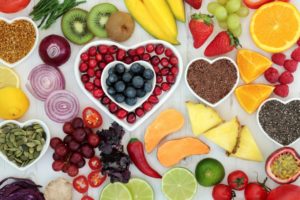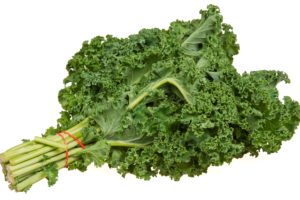on Feb 12, 2018 in Cancer prevention, General Wellness, Nutrition
Ever wondered why so many recipes for soups, stews, and sauces call for oregano. If you ever found yourself short, and omitted the oregano, no doubt you didn’t miss it in the final product. Oregano probably wasn’t added to recipes for the flavor value, but instead was added for the medicinal qualities it possesses. Oregano has long been valued in natural health communities for its antibacterial, antiparasitic, antiseptic, antiviral and immune stimulating properties. Building research in mainstream medicine is also re-discovering the many benefits of oregano. Test-tube studies have found that oregano and its components show promise in protecting against viruses. Two compounds, carvacrol and thymol, have demonstrated antiviral properties. Norovirus, a viral infection that causes diarrhea, nausea and stomach pain, was rendered inactive within one hour of treatment with carvacrol and another study found that thymol and carvacrol together, inactivated 90% of the herpes simplex virus in just one hour. Oregano is easy to grow on a kitchen windowsill and contains high amounts of healthy Omega-3 fats, iron, manganese, and antioxidants. Cuttings can be dried and stored for later use. Like the fresh herb, oregano oil has very high amounts of antioxidants and folk remedy uses it internally during illness, and externally for skin infections (including yeast) though it should be diluted before use. Due to potency, it is important to check with a qualified specialist or practitioner before using this or any other herb, especially during pregnancy or breastfeeding....
Read More
on Jan 29, 2018 in General Wellness, Healthy Skin, Nutrition, Weight Loss, Wellness Blog
There are many medical conditions that fail to respond to conventional medical treatment that may resolve when you follow an Elimination Diet ELIMINATION DIET Digestive problems Headaches Chronic sinus Low energy, fatigue Depression, mood disorders Eczema, skin irritations joint aches asthma weight gain The processed foods that are common today contain additives, dyes, preservatives, and trace pesticides that over-time can aggravate and inflame the tissues in your gut and major organs. After years of a poor diet this chronic inflammation deep in your tissues can tax your immune system. If the tissues in the lining of your gut become inflamed common foods like wheat, dairy, or eggs can cause symptoms. The Elimination diet is designed eliminate foods that burden your immune system while ensuring a high nutrient density foods that will facilitate gut healing. Usually an Elimination Diet is followed for three weeks, however your medical provider will discuss this with you. After an initial period following the Elimination diet different food groups are re-introduced slowly, allowing you to watch for negative symptoms. If a food group causes you a reaction, you avoid for another six months, and then try again. This protocol allows an opportunity to decrease inflammation in the GI tract, heal the lining of your gut, and calm your immune system. Once healing is achieved you can expand your food choices to include a wide variety of high nutrient dense foods. Like most people, you probably eat the same foods every day. If the food you eat is low quality or genetically you don’t tolerate those foods your body develops a sensitivity, and over time and you begin to suffer reactions to them. It is common for people to not realize how bad certain foods make them feel, or that particular foods are the culprit until those foods are removed from their diet. People experience different types of food-reactions: Food Allergies cause reactions which are severe and immediate. Examples would include swelling, hives, and difficulty breathing in reaction to nuts or seafood. Food Sensitivities may produce reactions hours to days later. Those with weakened immune systems may be prone to food sensitivities. Food Sensitivities are usually a result of an imbalance in the gastrointestinal tract system that affects...
Read More
on Jan 23, 2018 in General Wellness, Nutrition, Weight Loss
GO WITH YOUR GUT By Vicki Pepper MS, RD Go With Your Gut 2018 Article with References The need for a healthy gut and its impact on overall health is not a new concept. “All disease begins in the gut,” was penned over 2500 years ago by Hippocrates. But unfolding research is redirecting our attention to just how important gut health is and how many aspects of your overall health it impacts. Your digestive tract forms in the earliest stages of human development, when rapidly dividing cells of an embryo multiply around an empty space that eventually becomes a long tube surrounded by cells. This tube develops into your mouth, esophagus, stomach, small and large intestine. Almost every major organ connects to, or communicates with, your digestion tract ─ liver, pancreas, spleen, gallbladder, kidneys, even your brain. It is the highway through which everything you put in your mouth travels, where vital nutrition is absorbed, toxins are eliminated, and it is also home to a several trillion bacteria friends. So small they can’t be seen by the human eye, bacteria catch a ride on the food you eat or drink and put down stakes in your GI tract and stay. Our germ-o-phobic culture may have led you to believe that bacteria are harmful, and while there are types of bacteria that can cause sickness, there are many, many strains of bacteria that play a beneficial, even vital role in your overall health. In fact, having healthy bacteria in your gut is so vital, nature is designed to inoculate us from birth. In pregnancy woman produce hormones that cause the birth canal to become heavily populated with bacteria so newborns receive a healthy dose of good bacteria during birth.1 Infants born by C-section, fail to receive this inoculation, and consequently, as adults they have higher risks of suffering from asthma, autoimmune disorders, heart disease, and diabetes compared to those born naturally. You can’t change the way you were born, but there are lifestyle factors that you do have control over that can either harm or heal your gut health. Let’s look at some of these strategies. The most important strategy keeping your gut healthy is to feed the beneficial bacteria...
Read More
on Aug 24, 2017 in Nutrition
Read More
on Aug 17, 2017 in General Wellness, Nutrition
Better Home Grown! Kale is definitely a nutrition power hitter. Kale belongs to a family of vegetables that include broccoli, cauliflower and cabbage. Just one cup provides as much vitamin C as an orange, calcium equal to 1 cup of milk, 684% the RDA for vitamin K, and 206% the RDA for vitamin A, and is a significantly good source of protein, iron, the healthy omega-3 fats. Additionally Kale, the powerhouse of leafy greens, contains several different powerful anti-inflammatory phyto-nutrients that have been linked to aiding DNA repair, slowing of cancer cell growth, protecting you from colon and prostate cancers, and benefiting your stomach, liver, and immune system. So why should you grow it? Unfortunately kale tends to accumulate toxins in the soil, which routinely lands it on The Food and Drug Administration’s top 15 dirty list for foods with highest pesticide residue. Typically you can avoid pesticides by buying organic, but in the case of kale studies have shown that even organic kale may contain some pesticide so if you can grow it on your own – the better! The good news is that Kale is super easy to grow. A hardy and forgiving plant, kale will survive both under and over watering, poor soil, and abuse (you can step all over it and it springs right back up.) Kale also happens to be beautiful as a potted plant and can be grown in any yard, patio, or window shelf. Plant some kale and harvest leaves as needed for baked chips or smoothies. Plant some kale and harvest leaves as needed for baked chips or smoothies....
Read More
on May 8, 2017 in Cancer prevention, Nutrition
Anywhere from 5 times to 50 times sweeter than natural sources of sugar, artificial sweeteners have been marketed as a great alternative to sugary drinks and snacks. Thought to be safe and effective for people who needed to lose weight or suffer from diabetes, much of the early research regarding artificial sweeteners seemed to validate their safety. However, now decades and a host of independently funded studies later (instead of funded by the companies that had the most to gain by using artificial sweeteners), a clearer picture of their safety, or lack of it, seems to be emerging. Ninety two percent of independent studies on Sucralose™ and aspartame point to troubling adverse effects on health. Artificial sweeteners have been linked to higher incidents of stroke, cardiovascular disease, diabetes, pre-term birth, depression, and obesity. Possible links are indicated for some types of cancer, liver disease, kidney disease and dementia as well. Once considered a great alternate for diabetics, artificial sweeteners have been documented to increase insulin and blood sugar levels. In fact, one can of diet soda increases blood sugars and insulin 20% higher than drinking the same amount of regular soda. Diet beverages didn’t fare well for those trying to lose weight either. Apparently artificially sweetened drinks and foods alter carbohydrate metabolism in such a way as to increase appetite. “On average, those who drink diet sodas eat 88 to 150 more calories a day compared to those who don’t. Even more troubling is the fact that people drinking diet beverages gained weight even when researchers corrected their diets so there was no increase in calorie consumption. Most artificial sweeteners are not absorbed by our body. Instead they travel down through the colon and are digested by the bacteria in our gut. The fact that these substances are not absorbed was one of the main reasons artificial sweeteners were once considered safe. Ironically, it now appears that is the reason they are so detrimental. As little as one can of soda can significantly alter the type of bacteria that thrive in your digestive tract. Good bacteria help regulate hormones, moods, vitamin and mineral absorption, weight regulation, and so much more. Unfortunately, there is bacteria in our gut that if...
Read More





